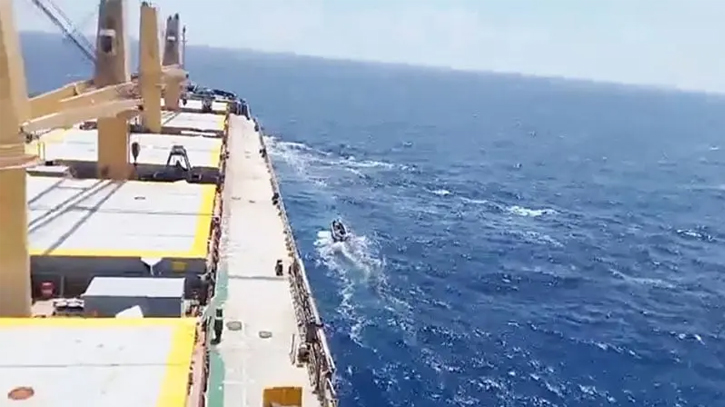
Photo : Collected
All bulk carriers, merchant ships and ocean-going vessels must strictly follow International Maritime Organisation (IMO) security protocols to avert attacks and hijacking by sea pirates.
As far as maritime security is concerned, the IMO provides support, assistance and guidance to member governments on matters relating to the implementation of the Safety of Life at Sea (SOLAS).
The IMO adopted security protocols in response to the brutal jihadist acts of September 11, 2001, in the United States. IMO responded swiftly and firmly the need to protect the international maritime transport sector against the threat of terrorism.
The safety of the crew and other passengers aboard ships is one of the key concerns of the business, and SOLAS, or Safety of Life at Sea, is often recognised as the most significant of all international conventions.
The hijacking of the Bangladesh-flagged vessel by Somali pirates in the Indian Ocean has once again brought the issue of maritime security to the forefront.
According to IMO guidelines under Best Management Practices, ships traversing high-risk areas must follow specific security protocols. This includes hiring armed guards, securing the ship’s perimeter, employing tactical navigation, and consulting the crew’s expertise.
Whether the captain of MV Abdullah followed the security protocols will be known after independent investigation. Whether there was any security lapses which made the vessel fall into the hands of the pirates that would surely be probed.
The sea route within 70 to 100 nautical miles of the Somali coast is considered as a high-risk area. MV Abdullah travelling 600 nautical miles off the Somali coast when the pirates hijacked the ship. The attack unusual as Somali pirates rarely target the route.
Commercial vessels travelling through the Indian Ocean considered a safer route. The sailing through the Gulf of Aden and Red Sea adopt various security protocols to thwart pirate attacks.
IMO and other maritime organisations offer guidelines for navigating 'high-risk areas' and advice on precautions near the Somali coast.
MV Abdullah was laden with 55,000 tonnes of coal sailing at 15 nautical miles per hour. Which means the ship's deck was closer to the water's surface, and without any protective netting, it became an easy target for pirates. The lack of obstacles made it simpler for pirates to board and seize control.
A vessel laden with cargo cannot exceed speeds of 15 nautical miles per hour. That's precisely the speed at which MV Abdullah was travelling when it was hijacked.
The hijacking recalls the capture of another vessel owned by the same company, the MV Jahan Moni, which was captured by pirates 14 years ago on its way to Greece.
Messenger/Fameema










